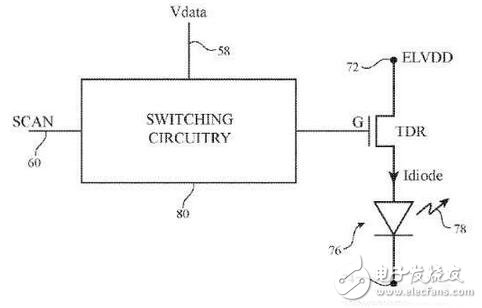Apple plans to adopt OLED technology on the iPhone next year and is looking for suppliers to help the company innovate OLEDs. This article will discuss several patents about OLED released by Patently Apple in the near future. Now let's take a look at Apple's OLED project. What medicine is sold in the gourd!
It has been reported that in the 1980s, Shibuya, because many companies were too lax, found many competitive messages in many trash bins of their company's mail. This may be a messy job, but in fact you can find "gems" in the chaos from time to time. Recently, the focus is on patent diving, which will move more in the way of information.
It's really hard for companies to be in a “stealth†model, especially when they are still innovators. For example, it's easy to find out the basis of a new technology simply by looking at existing patents, which is certainly true in the case of Apple and its OLED program.
Some recent releases by Patently Apple are that some organic light-emitting diode (OLED) applications (apps) have been released. The first one is "Organic Light-EmitTIng Diode Display with Smooth Dimming Control", and the patent application number is 20160284275. The task of this technology is to use a peak brightness control algorithm (peak Luminance control algorithm) to control the brightness of the OLED display. The innovation involves the ability to control the brightness of a series of cascaded digital-to-analog converter (DAC) circuits and the ability to calibrate the display over a range of display brightness settings, used when the settings fall between successive brightness settings Voltage interpola (TION) operations are performed to achieve the desired brightness, and the purpose of using voltage interpolation is to minimize luminance jumps and color shifts during brightness adjustment.

Figure 1 This is a schematic diagram of the above-mentioned patent for OLED display pixels.
Another patent is "Organic Light-EmitTIng Diode Display with Gate Pulse Modula TIon", patent application number 20160284276. This second innovation addresses the precise control of OLED pixel performance. Although the transistor threshold voltage compensation does not compensate for variations in the driver transistor, it does not compensate for variations in the switching transistor. As a result, it is coupled to the switching transistor. The voltage at the gate of the drive transistor becomes small. This results in a reduction in the luminance range of the pixels, and the drive transistor current may become more sensitive to switching transistor component parameter variations.
According to the content of the patent application: "The display driver circuit can load data into the pixel array through the data line. The display driver circuit can provide a control signal including the scan signal to the pixels via the control line, and each pixel can have a transistor and a capacitor circuit. For controlling emission from the light emitting diode light. The driving transistor may have a driving transistor gate terminal which is a driving transistor gate terminal coupled to one of source-drain terminals of the switching transistor The switching transistor may have a switching transistor gate terminal that receives the scanning signal. When in the transmitting phase before the conversion to the operation, the scanning signal may have a two-stage conversion curve, or enhance the display performance by reducing the dynamic effect in the switching transistor. shape."
Bloomberg's recent report alleged that Apple plans to adopt OLED technology on the iPhone next year and is looking for suppliers to help the company innovate OLEDs.
Wireless Charging Multifunctional Sterilizer
Phone Sterilizer,Mobile Phone Sterilizer Box,Wireless Charging Uv Sterilizer Box,Wireless Charging Multifunctional Sterilizer
wzc , https://www.dg-wzc.com